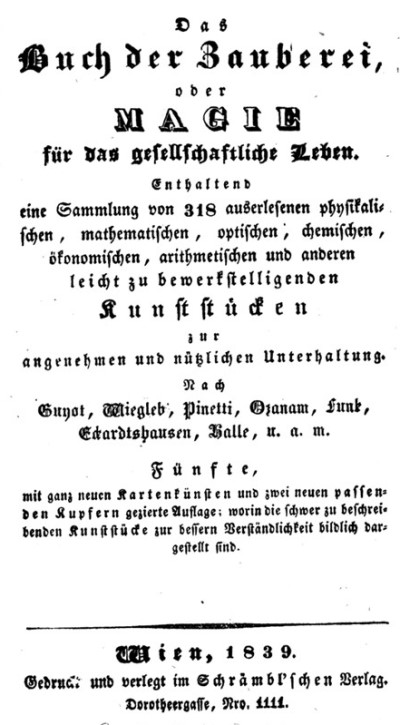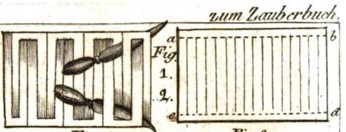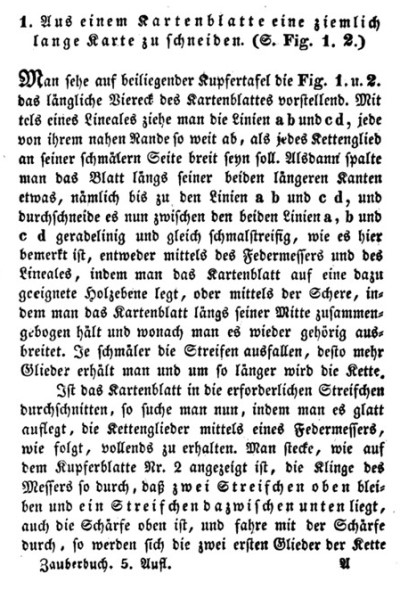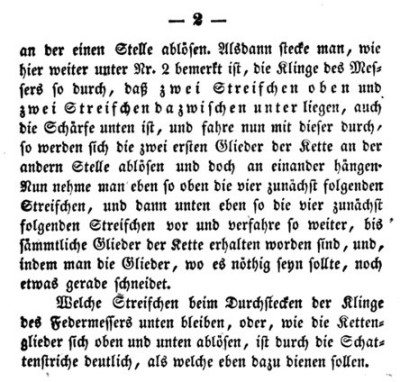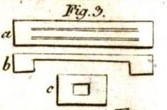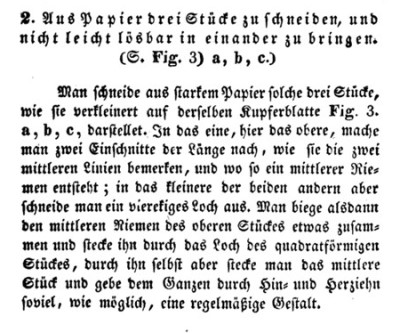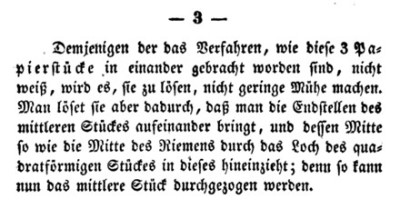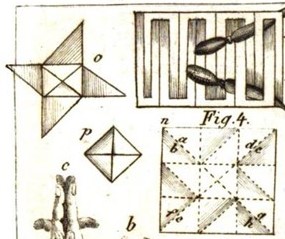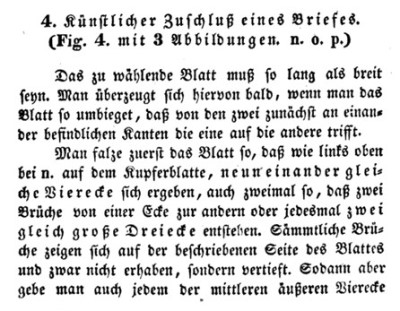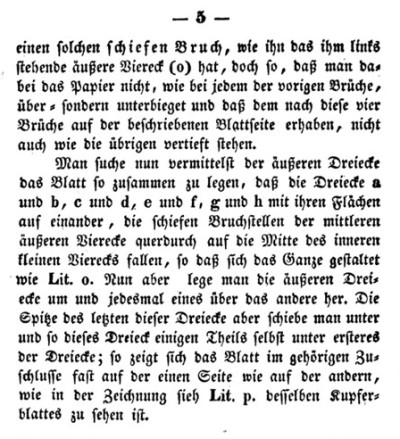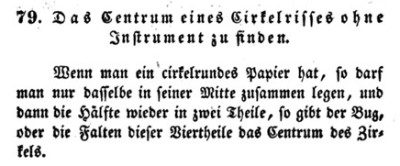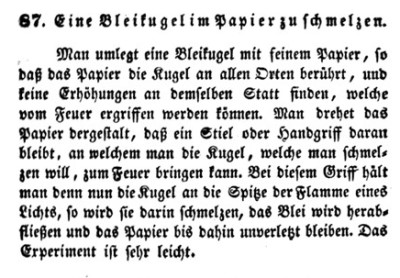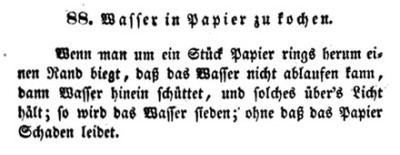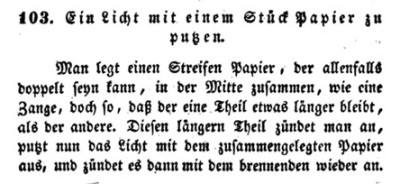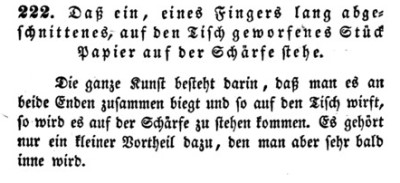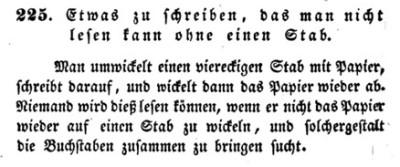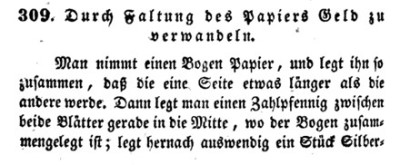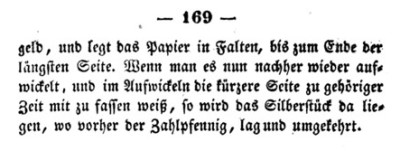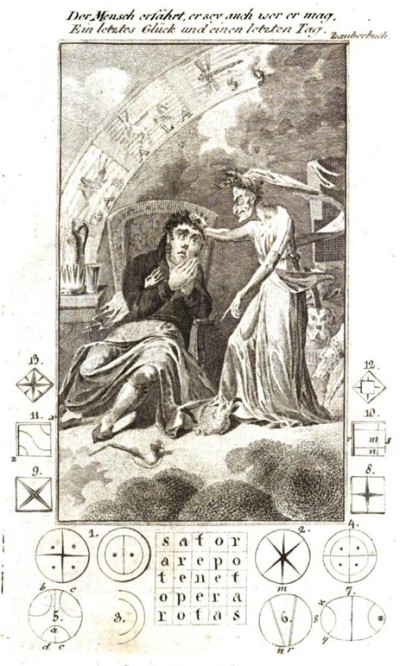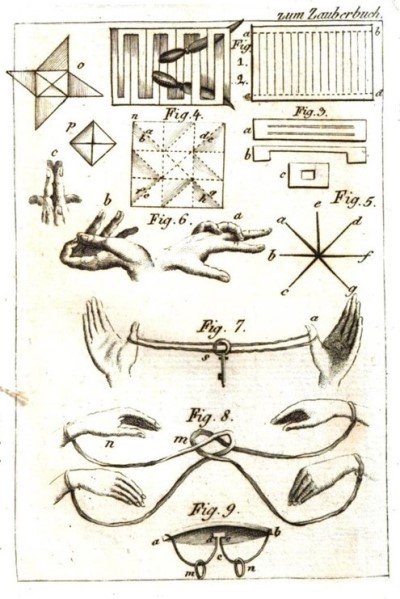| The Public Paperfolding History Project
Last updated 2/4/2024 x |
|||||||
| Das Buch der Zauberei by Johann August Donndorff, 1839 | |||||||
'Das Buch der Zauberei' by Johann August Donndorff (authorship information from Edwin Corrie) was first published in 1831. I have not been able to access a copy of the first four editions. The 5th edition was published in 1839 and a full copy can be accessed here. The title page of this edition states that this edition is 'adorned with ... two new copper engravings in which the tricks that are difficult to describe are illustrated for better clarity'. These two plates include several illustrations that relate to the paperfolding material. They appear to have been largely copied from illustrations previously appearing in 'Mechanemata oder der Tausendkünstler' by Dr Heinrich Rockstroh (which was published in 1831).
The paperfolding material relating to these added illustrations is also based on material in 'Mechanemata' and does not seem to have appeared in the earlier editions. (Information from Edwin Corrie.) There is one obvious anomaly. In 'Mechanamata', illustrations 12 and 13 (included on the Frontispiece here) were part of the illustrations for a letterfold based on the Cross . Here they have been taken as examples of .... (see page 85). ********** Analysis How to Make a Chain from a Playing Card
********** The Three Pieces Puzzle
********** Artful Closure of a Letter - The Puzzle Purse
********** How to Find the Centre of a Circle by Folding
********** How to Melt Lead in Paper
********** How to Boil Water in a Paper Pan
********** To blow out a candle with a piece of paper
Translated to English (by Edwin Corrie) this reads, 'Take a strip of paper, which if necessary can be doubled, and fold it in half, like a pair of tongs, but so that one part is slightly longer than the other. Set light to the longer part, then blow the candle out with the folded paper, and light it again with the burning part.' ********** How to Drop a Strip of Paper to Land on One Edge
********** To write something that another person cannot read without a stick Translated to English (by Edwin Corrie) this reads, 'Wrap a piece of paper round a square stick, write on it, and unwind the paper again. No one will be able to read it unless they wind it back onto the stick and try to bring the letters back together again.'
********** How to Write Neatly in the Dark
********** The Fold and Switch Effect
********** Selected Pages
********** |
|||||||
